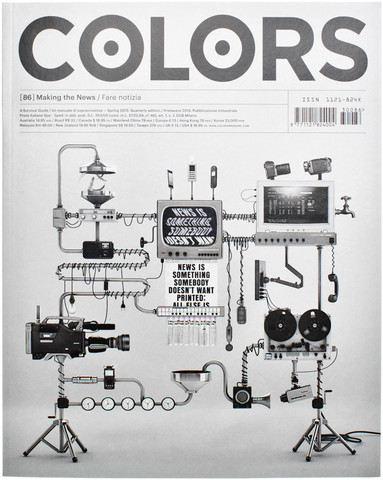Benetton’s COLORS magazine, which explores various facets of modern life, has released its #86 issue dedicated to contemporary journalism. Under the new theme, “Making the News,” the brand provides an insight into the changing world of the journalism today, which is greatly influenced by technology, economy and many other crucial factors.
The issue was presented at the International Journalism Festival in Perugia, Italy on April 24. At the launch, COLORS editor-in-chief Patrick Waterhouse took stage to talk about how the magazine is made and also discuss the “slow journalism” phenomenon (patient facts assembling) as well as his favorite insider stories about the modern period in the news industry. The current issue, available for Euro 13, with a black-and-white vintage inspired cover, included four stories and short pieces by 46 contributors.

“Making the News,” delivered in two-language format (English + Italian, French, Portuguese, or Spanish), features tons of photos and facts that help see the real face of journalism at the moment. For instance, it states that “Sixty percent of articles in UK newspapers are wholly or mainly copied from press releases or wire copy.”
The visitors to the festival could feel like newsmakers with the new project from COLORS, the interactive News Machine, developed in partnership with designer Jonathan Chomko. The sophisticated installation, made of a number of connected elements representing different media, demonstrated the effect of “Chinese whispers.”
Between April 24-28, attendees were invited to tweet a message to @colorsmachine. Once sent, the message began flowing across the media channels. First, it was read out aloud by a megaphone and recorded with a tape recorder, after that the message got converted into text for TV—a camera watched the TV and converted the message it saw into a radio signal and sent it to the radio. The audio message was read aloud, and then a microphone transformed it into a text again, which finally got printed out. The final message greatly differed from the original one. The message of the project was to demonstrate that the “accuracy of reproduction varies according to the clarity of your writing and to chance.” Watch the video below to see the process in detail.